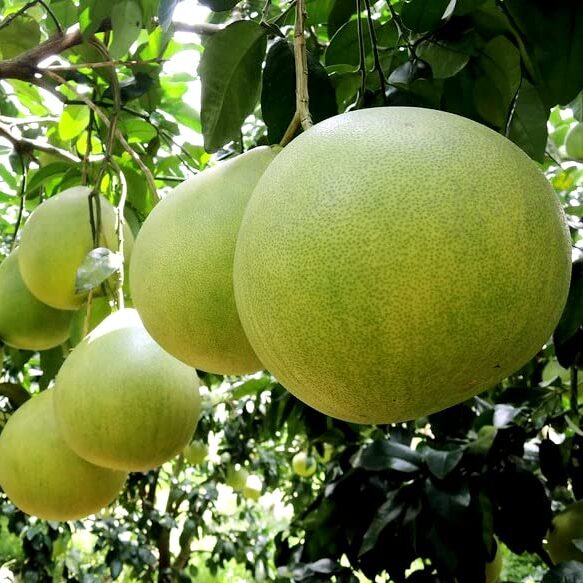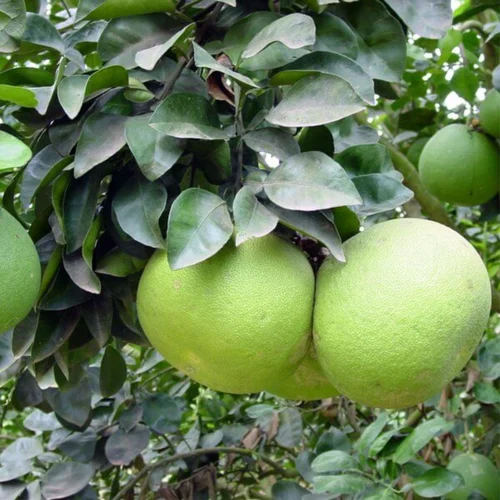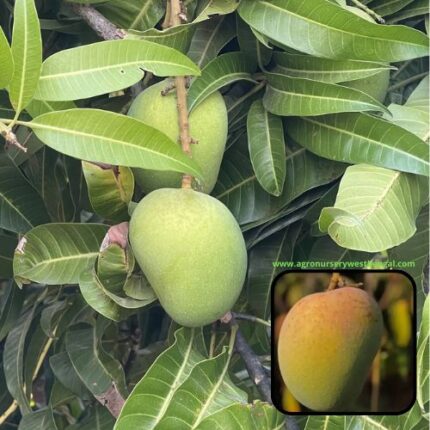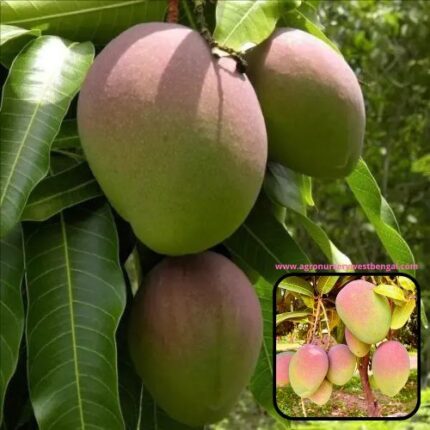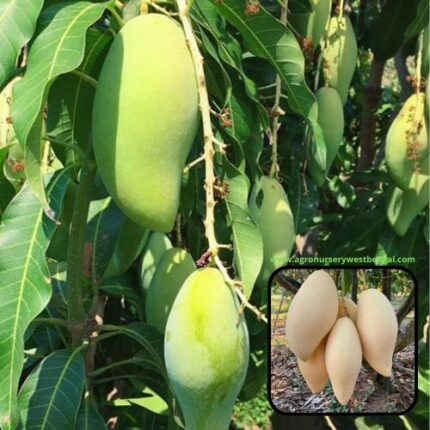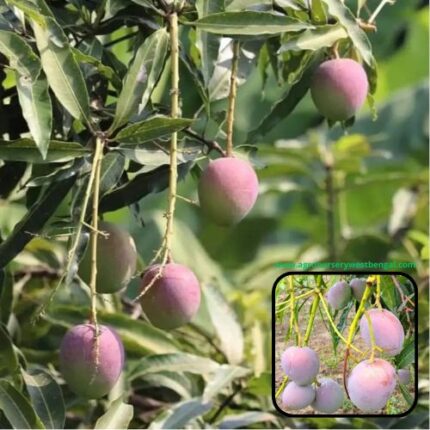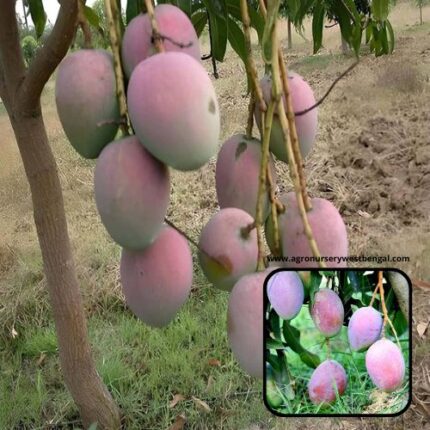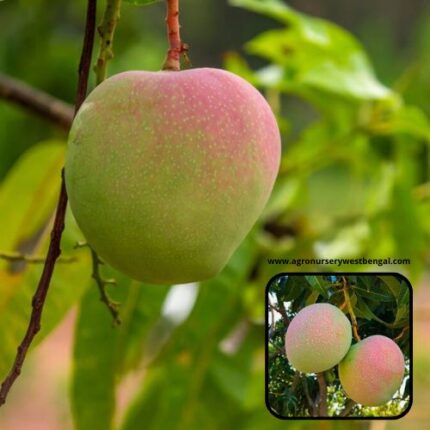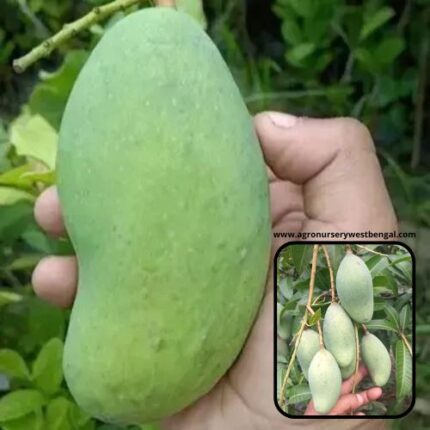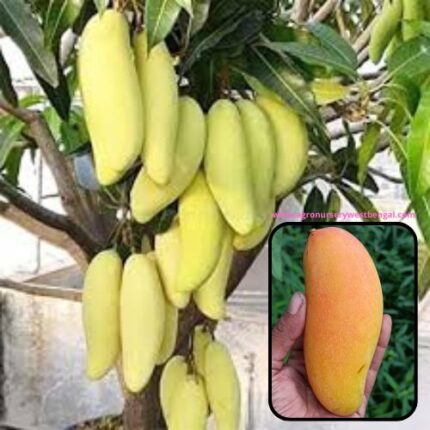
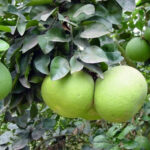
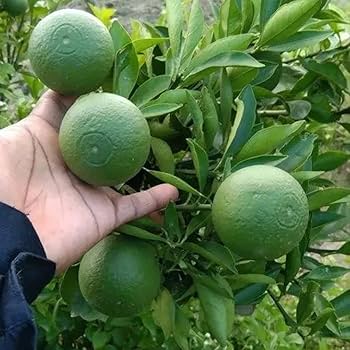
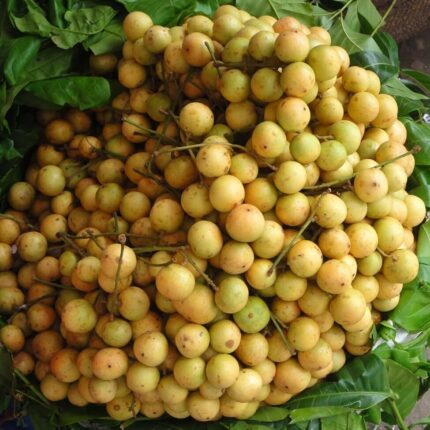
Pomelo fruit plants
₹899 Original price was: ₹899.₹499Current price is: ₹499.
The Pomelo, scientifically known as Citrus maxima (or Citrus grandis), is the largest of all citrus fruits and is considered one of the original, non-hybrid citrus species from which many other common citrus fruits (like grapefruit, which is a hybrid of pomelo and sweet orange) were derived. It is particularly popular in Southeast Asia and parts of India.
Here’s a detailed description of the Pomelo fruit:
-
Appearance:
- Size and Shape: Pomelos are truly impressive in size, typically measuring 10 to 30 cm (4 to 12 inches) in diameter, and can weigh anywhere from 1 to 3 kilograms (2 to 7 pounds), sometimes even more. They are generally round to pear-shaped or teardrop-shaped.
- Skin (Rind): The rind is remarkably thick and spongy, much thicker than a grapefruit. It can range in color from a light green to yellow, and sometimes has a slightly rough or pitted texture, often dotted with oil glands. This thick rind makes them quite durable.
- Pith: Beneath the outer rind is an extremely thick layer of white, spongy pith. This pith is bitter and must be removed before eating the fruit.
- Internal Flesh: The edible flesh is segmented, typically into 9 to 14 large segments, enclosed by a paper-thin, sometimes bitter, membrane that is usually removed before consumption. The flesh color varies significantly by variety, ranging from pale yellow to white, and popular varieties can have vibrant pink or red flesh.
- Seeds: Some varieties are quite seedy, while others can be nearly seedless.
-
Taste and Texture:
- Taste: Pomelo’s flavor is generally sweet and mild, with a balanced tanginess. It’s often described as tasting like a grapefruit but without the bitterness or strong tartness that some people dislike in grapefruit. The pink/red-fleshed varieties tend to be sweeter and juicier than the white-fleshed ones. Some varieties may have subtle floral or honey notes.
- Texture: The individual pulp vesicles (juice sacs) within the segments are large and firm, giving the flesh a distinct, slightly crisp, and often chewy texture. It’s not as watery as an orange or grapefruit, making it less messy to eat.
-
Botanical Characteristics and Origin:
- Pomelo trees are evergreen, with low spreading branches that can reach 5 to 15 meters (15 to 50 feet) in height. They have large, dark green, glossy leaves.
- They are native to Southeast Asia and Malaysia, with a long history of cultivation in China (over two thousand years). They thrive in tropical and subtropical climates.
-
Seasonality (in India/West Bengal):
- In many parts of India, including West Bengal (where it’s known as Batabi Lebu or Jambura), pomelos are typically a late monsoon to winter fruit, often available from around September/October through February/March. They are particularly associated with festive seasons like Diwali and Chinese New Year.
-
Nutritional Value and Health Benefits:
- Pomelo is a highly nutritious fruit, packed with:
- Vitamin C: An excellent source, providing well over a day’s recommended intake in a single fruit, vital for immune health and skin.
- Dietary Fiber: Abundant in both the pulp and peel, aiding digestion and promoting gut health.
- Potassium: Important for blood pressure regulation and fluid balance.
- Various antioxidants (naringenin, naringin, lycopene – especially in pink/red varieties), which help combat free radicals and reduce inflammation.
- Smaller amounts of B vitamins and other minerals.
- Its high fiber and water content can contribute to satiety and aid in weight management.
- Pomelo is a highly nutritious fruit, packed with:
-
Culinary Uses:
- Fresh Eating: The most common way to enjoy pomelo is fresh. It requires careful peeling due to the thick rind and pith, and the removal of the bitter membranes from around the segments. The juicy segments are then eaten as is.
- Salads: Its firm texture and distinct flavor make it a popular ingredient in various Asian salads, especially in Thai cuisine (e.g., Yum Som-O, a spicy pomelo salad with shrimp or chicken).
- Juices and Beverages: Can be juiced for a refreshing drink.
- Desserts: Used in fruit desserts, often in combination with other tropical fruits.
- Candied Rind: The thick rind, despite being bitter, can be candied or used in marmalades and jams.
- Medicinal/Traditional Uses: In traditional practices, various parts of the pomelo are used for their medicinal properties, including treating coughs, indigestion, and for ceremonial purposes.
The Pomelo stands out as a “gentle giant” of the citrus world, offering a delightful balance of sweet and tangy flavors with a satisfyingly firm texture, making it a refreshing and healthy choice

